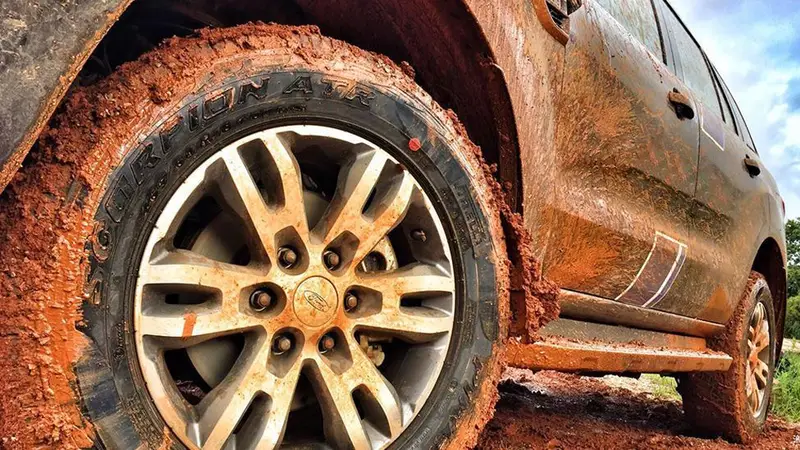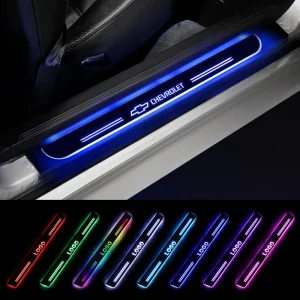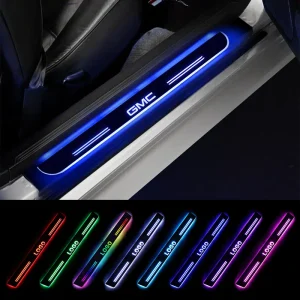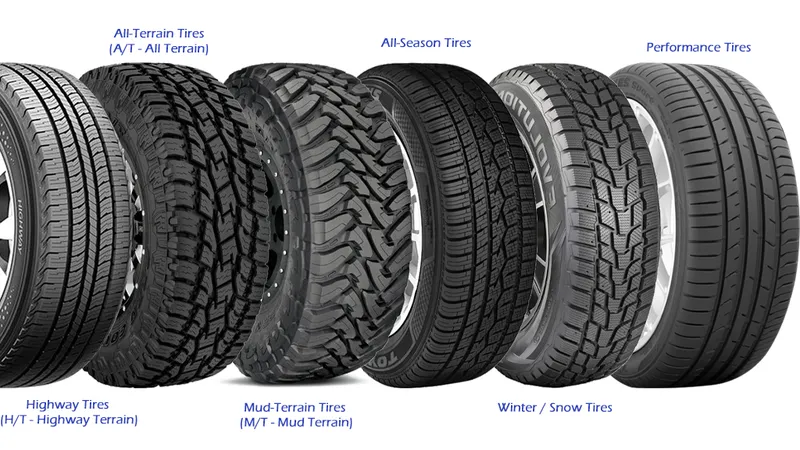Your Chevrolet Silverado is built for work, play, and everything in between. But the factory tires? They’re often a compromise. Upgrading your tires is one of the most impactful modifications you can make, significantly enhancing capability, safety, comfort, and even looks. Whether you’re tackling job sites, exploring off-road trails, cruising highways, or braving winter roads, the right tires make all the difference. Let’s navigate the world of tires, explore your options, and get your Silverado rolling on the perfect set.
Understanding the Landscape: What Types of Car Tires Are There?
Before diving into Silverado specifics, it’s crucial to understand the main tire categories. Each is engineered for distinct priorities:
1. Highway Tires (H/T – Highway Terrain):
Focus: Smooth, quiet ride, long tread life, fuel efficiency on paved roads.
Tread: Less aggressive, tighter rib pattern for reduced noise and vibration.
Best For: Primarily on-road driving, commuting, highway towing, maximizing mileage.
Silverado Fit: Often the factory default. Great for work trucks that rarely leave pavement.
2. All-Terrain Tires (A/T – All Terrain):
Focus: A balanced blend of on-road comfort and off-road capability. The most popular upgrade for trucks.
Tread: More aggressive than H/T, with larger tread blocks, deeper grooves, and often reinforced sidewalls. Designed to shed mud and grip loose surfaces while maintaining decent road manners.
Best For: Drivers who split time between pavement and dirt/gravel roads, light to moderate off-roading, towing, and need year-round versatility.
Silverado Fit: The sweet spot for many owners. Offers significant capability gains over stock without excessive noise or wear penalties.
3. Mud-Terrain Tires (M/T – Mud Terrain):
Focus: Maximum traction in the toughest off-road conditions – deep mud, rocks, sand.
Tread: Very aggressive, large, widely spaced tread blocks, deep voids for self-cleaning, reinforced sidewalls. Often feature “biting” edges.
Trade-offs: Significantly louder on pavement, faster tread wear, reduced wet/snow traction, potentially rougher ride, lower fuel economy.
Best For: Serious off-road enthusiasts, frequent mud bogging, rock crawling. Less ideal for daily highway commutes.
Silverado Fit: For dedicated off-roaders or those prioritizing extreme capability over daily comfort.

4. All-Season Tires:
Focus: General-purpose tires designed to perform adequately in a variety of conditions, including light snow. Often overlaps heavily with H/T for trucks.
Tread: Similar to H/T but with specific compounds and siping (small cuts) to improve cold-weather flexibility and light snow traction.
Best For: Moderate climates with predictable winters. Not ideal for severe winter conditions or heavy off-road use.
Silverado Fit: Common factory fitment, especially in milder regions. Good for general use if severe winter isn’t a concern.
5. Winter / Snow Tires:
Focus: Superior traction, braking, and handling on snow, ice, and in cold temperatures (below ~45°F / 7°C).
Tread: Soft, specialized rubber compound that stays pliable in freezing temps. Deep tread with aggressive siping for biting into snow/ice.
Best For: Regions with significant snowfall and sustained freezing temperatures. *Crucial for safety in harsh winter conditions.
Silverado Fit: Highly recommended for owners in snowy climates. Used seasonally.
6. Performance Tires:
Focus: Maximum grip and handling on dry/wet pavement. Not typically relevant for full-size trucks like the Silverado, more suited to sports cars and sedans.
Beyond Type: Critical Specifications for Your Silverado
Size: Found on your door jamb sticker (e.g., P265/70R17, LT275/60R20). Must match your wheel diameter and clear suspension/body components.
Load Range / Ply Rating: Indicates weight capacity. Silverados often require Load Range C, D, or E (especially HD models). “LT” (Light Truck) tires have stronger constructions than “P” (Passenger) tires. NEVER downgrade load capacity.
Speed Rating: Indicates maximum safe speed. “S” (112 mph) or “T” (118 mph) are common for trucks and usually sufficient.
Treadwear, Traction, Temperature (UTQG): Provides relative comparisons for wear life, wet traction, and heat resistance (useful within a brand/line).
Choosing the Perfect Tire: How to Decide?
Selecting tires involves honest self-assessment:
1. Assess Your Driving: Where do you spend 80% of your time? (Highway? Dirt roads? Deep mud? Snowy commutes?) Be realistic.
2. Define Your Needs:
Capability: Do you need better off-road traction? More towing stability? Severe snow performance?
Comfort: How important is a quiet, smooth ride?
Durability: Do you put on high mileage? Drive on abrasive surfaces?
Longevity: What’s your budget and how often do you want to replace tires?
Appearance: Do you want a more aggressive look?
Budget: Prices vary significantly. Factor in installation, balancing, potential TPMS sensors.
3. Consider Your Silverado Model & Setup: A lifted truck can accommodate larger tires than stock. A 2WD Silverado doesn’t need extreme M/Ts. Know your truck’s capabilities and limitations.
4. Research & Read Reviews: Look for reviews from other Silverado owners with similar year/models and driving habits. Pay attention to reported road noise, wear, and real-world performance.
5. Consult Professionals: Talk to reputable tire shops specializing in trucks. They can offer insights based on your specific truck and needs.

The Silverado Crowd Favorites: What Owners Choose
Based on popularity, forum discussions, and real-world feedback, here’s what resonates with Silverado owners:
1. All-Terrain (A/T): The Undisputed Champion.
Why: Perfect balance for truck owners. Significant off-road improvement over stock without sacrificing too much on-road comfort. Excellent versatility.
Top Contenders:
BFGoodrich All-Terrain T/A KO2: The gold standard. Legendary durability, great traction, aggressive looks. Slightly noisier than some.
Toyo Open Country A/T III: Excellent all-around performer, strong in wet/light snow, good tread life, quieter than KO2.
Nitto Ridge Grappler: Hybrid A/T-M/T. Aggressive look, surprisingly quiet for its capability, good on-road manners.
Falken Wildpeak A/T3W: Gaining massive popularity. Exceptional value, outstanding snow performance (3PMSF rated), rugged look.
Michelin Defender LTX M/S: The ultimate highway/hybrid choice. Superb ride, quietness, longevity, and wet traction. Excellent for towing. Less aggressive off-road.
2. Mud-Terrain (M/T): For the Adventurers.
Why: Pure capability off-road. Looks incredibly tough.
Top Contenders:
BFGoodrich Mud-Terrain T/A KM3: Proven off-road dominance, durable.
Nitto Trail Grappler M/T: Popular for aggressive looks and strong performance.
Mickey Thompson Baja Boss M/T: Newer contender with excellent reviews for traction and durability.
(Note: Owners choosing M/Ts are typically very aware of the on-road trade-offs)
3. Winter Tires: The Safe Choice for Snow Belt Owners.
Why: Unmatched safety and control in winter. Often purchased as a dedicated winter set on separate wheels.
Top Contenders: Bridgestone Blizzak DM-V2, Michelin X-Ice Snow, Toyo Observe GSi-6, Goodyear Ultra Grip Ice WRT.

The Upgrade Process: How to Upgrade Tires on Your Silverado
1. Research & Selection: Use the criteria above to narrow down your choices. Decide on type, specific model, and size. Crucial: Verify the new size will fit without rubbing at full lock or suspension compression. Use online fitment guides (like Tire Rack’s) or consult a shop. Consider load range (E-load is common for heavy-duty use).
2. Source Tires: Buy from reputable dealers (online or local). Factor in installation costs.
3. Professional Installation:
Mounting & Balancing: Essential for a smooth ride and even wear.
TPMS: Your Silverado’s Tire Pressure Monitoring System sensors may need to be transferred from the old wheels or new ones purchased/programmed if getting new wheels.
Alignment: Highly Recommended. New tires, especially different sizes or types, warrant an alignment check to prevent premature wear.
Torque Specs: Lug nuts must be torqued to the manufacturer’s specification (usually around 140 lb-ft for Silverados) and re-torqued after 50-100 miles.
4. Break-In Period: Drive moderately for the first 100-500 miles as recommended by the tire manufacturer. Avoid hard acceleration, braking, and sharp turns to allow the mold release compound to wear off and the tread to settle.
5. Adjust Tire Pressure: Set pressures based on the tire manufacturer’s recommendation for your Silverado’s load, not just the door jamb sticker (which is for the original tires). Check cold pressures monthly.
Invest in Your Ride
Upgrading your Chevrolet Silverado’s tires isn’t just about looks; it’s about unlocking its full potential and enhancing safety. By understanding the different types, honestly assessing your needs, researching popular choices among owners, and following a careful upgrade process, you can confidently select the perfect set of tires. Whether you choose the versatile dominance of an All-Terrain, the rugged capability of a Mud-Terrain, or the specialized safety of Winter tires, the right rubber will transform how your Silverado handles every mile, every job, and every adventure. Hit the road (or trail) with confidence!
Types of Car Tires




